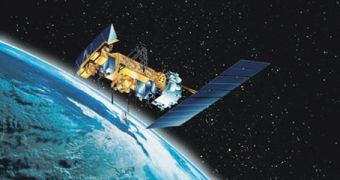Only recently, the journal Nature Geoscience witnessed the publication of a new study stating that, extreme weather manifestations and rising sea levels aside, climate change and its underlying causes must also be held responsible for the fact that the satellites now orbiting the earth are beginning to pick up the pace.
As well as this, the space junk floating about in our planet's atmosphere is also speeding up.
This basically means that the scientists in charge of overseeing these man-made satellites and keeping them out of trouble might soon have to work extra hours in order to make sure they stick to their initial trajectories.
Inhabitat explains that whatever carbon dioxide molecules end up in the planet's thermosphere collide with the oxygen molecules they encounter.
This process leads to heat being released into space, and as a direct result of this, the thermosphere's average temperature decreases to a considerable extent.
Once this happens, the thermosphere tends to contract, something which translates into the drag on satellites being reduced.
Naturally, this means that the satellites and the space debris in their proximity begin to move faster.
“Anthropogenic CO2 increases are expected to propagate upward throughout the entire atmosphere, which should result in a cooler, more contracted thermosphere,” the study reads.
Furthermore, “This contraction, in turn, will reduce atmospheric drag on satellites and may have adverse consequences for the orbital debris environment that is already unstable.”
Needless to say, these changes in the satellites and space junk's dynamics can potentially impact on various communication systems and information technologies.
Because of this, there are many who claim that further study is needed in order to better understand how the changes brought about by the ever-increasing global CO2 emissions will affect the movement of satellites and space debris.
This particular research was carried out by scientists working with the US Naval Research Laboratory’s Space Science Division.

 14 DAY TRIAL //
14 DAY TRIAL //